Commissioned contribution by Rose Higham-Stainton
Saint Munditia's Teeth is a textual, visual, and audible tapestry weaved by Rose Higham-Stainton during her residency at Peripheral Alliances (a former horse farm behind a petrol station near Lake Ammersee, hosted in association with the Kunstverein München). Beginning from the bejewelled body of Saint Munditia—the Baroque Catacomb Saint of unmarried women—in a church in Munich, Rose constructs this work as a shrine, made of assemblages of gleaned objects, ideas, and images.
The work took on physical form as an installation for a group show at the residency in November 2021, a collaborative dinner at Freitagsküche in Frankfurt, and a soundscape in collaboration with Leyla Pillai for a presentation for PlusX on Cashmere Radio in Berlin.
〜 〜 〜
The changing of focus in the eye, moving the eye itself when looking at things that do not move, deepens one’s sense of outer reality. The static things may be caught in the very act of becoming.’
Nan Shepard, The Living Mountain, 1977
I place her jewelled body on the desk. The conspicuous lustre of the prayer card punctuates the plain room and the temperate obedience of the day, and each day that follows I glean things and lay them at her feet: three burnished husks of ornamental corn; two pine kernels in their finery of geometric patination; some sycamore leaves flashing yellow and green, veined with red, burning out to orange; opaline bath pearls; a shale of frankincense from the monastery; a drinks coaster; two cartoon acorns; a tooth of coralline granite and a pharmaceutical-pink receipt from the lake-crossing under a pliant twilight sky.
And soon I am building a shrine, not for the veneration of one body but as the point at which things meet. I am addressing the ornamental corn and I am addressing the corpse of Saint Munditia; I am addressing the corn and Munditia in a single breath—feeling, body and looking for the similitude. I am looking at the teeth of the corn as the teeth of the body and waiting for something to click. I am not making sense of it or demanding a shared sense or meaning. I am trying to engender something meaningful—by which I mean useful—without loading each object—by which I mean bodies—with new meanings. These things come to touch in the likeness of their teeth—those kernels flashing like opaline, ruby, amethyst, quartz—and soon I am addressing the mountains too blue, and crystallising beyond the lake, in powdered folds, their snow-clefts like teeth. On ways of seeing and mountains, Nan Shepherd writes ‘by so simple a matter, too, as altering the position of one’s head, a different kind of world may be made to appear.’ As for mountains, so for bodies. Legacy Russell, writes 'we recognise that we begin in abstraction, and then journey towards becoming.’
Drawing relations between their surface, objects gravitate. I allow this because of their immediacy—in my real time, my real mouth, my real hands—a space-time where ornamental husks of corn are heaped on roadsides and dead bodies are venerated in glass tombs; and Christ is sheathed in plastic and bleeds eternally, to remind us of his suffering.
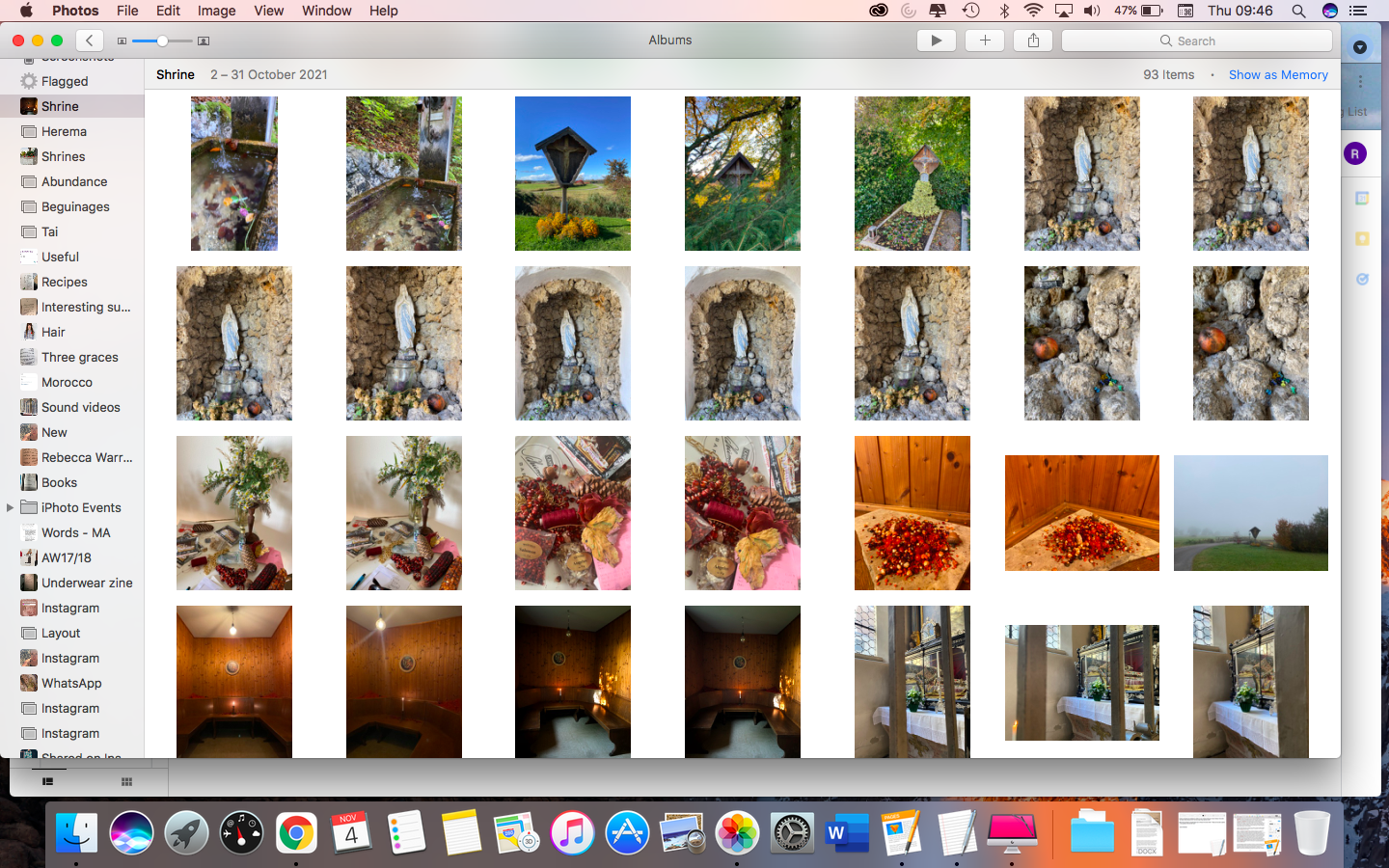
When thousands of bodies were discovered in a Roman catacomb, the church sent psychics down into the subterranean tunnels to identify saints and martyrs. These cosmic minds sensed golden auras and pleasant scents and so dredged a body—any body—from the depths. They named her Munditia—the saint of unmarried women. Delivered to nuns in a convent, her anatomical arrangement articulates the failure of a woman’s formal education then, and so too the failure to know their bodies. These bare bones were bound in cloth, adorned with jewels and the gold of wealthy patrons and perhaps one of the nun’s own modest rings. Articulating the splendour of the faithful in the afterlife, catacomb saints like Munditia were gifted to Catholic nations as a divisive act and ostentatious show—she to Munich’s St Peter’s Church, against the rise of protestantism in Bavaria. A woman’s body—a single woman’s body—as artillery fire, as propaganda, as provocation to the faithful.
I linger on the ink well with its blood turned to ash in the tradition of a catacomb saint, and the quill in her hand—the quill as long as her body—and then settle on the teeth like kernels, as I have driven those bones like rafters to a point of connection. The upper row are synthetically aligned and too pristine for the body of a saint born circa 205AD, reincarnated in the flourish of Baroque Rome. Her skeletal form and her skull is swaddled in a fine diaphanous stocking. Owing to some rearrangement of the jaw by her conservator, Munditia bares a smile like grimace; she is bereft of cartilage and so there is a hollow void where the nose should be and above it, in the sunken sockets prosthetic eyes laced in gold brocade and absolved of lids so that she peers furtively through her shroud and through the glass encasement of her tomb—some 400 years old. While by the roadside, crates of corn (see also Ornamental Corn, Indian Corn, once Mesoamerican nourishment) blaze in tight kernels—ombre rows of deep reds and browns; or staccato in the hybridisation of burnished gold, orange bleeding into yellow like starbursts and bruised silver, the way the jacquard, pink chest plate below Munditia’s reclining skull is laden with pearls and seismic gemstones—proxies of amethyst, jade and ruby—and each exposed rib, like a tooth, is bound in gold twine and dripping in pearls. I am thinking about the jewels as corn, as teeth, and the spare husk that remains.
Soloist, survivalist, saint—Munditia was pillaged for her finery in the 1960s. Now the hollow cavities of her old ill-proportioned limbs are laden with new pearls. She resides in a side chapel behind glass and behind iron, sidelined but blazing in gold, on a bed of regal velvet, and I wonder who is really at stake. Munditia marks the dichotomous push and pull of visibility under the patriarchy so that beneath this remedial ornament and the order of her stiffened toes and the taught arm, is a body ill-at-ease. A body as venerated site, is a violence made twofold in her posthumous lustre and glass tomb.
The dis-located bones—like the corn husks, like the mountains—crack and echo in the nave.
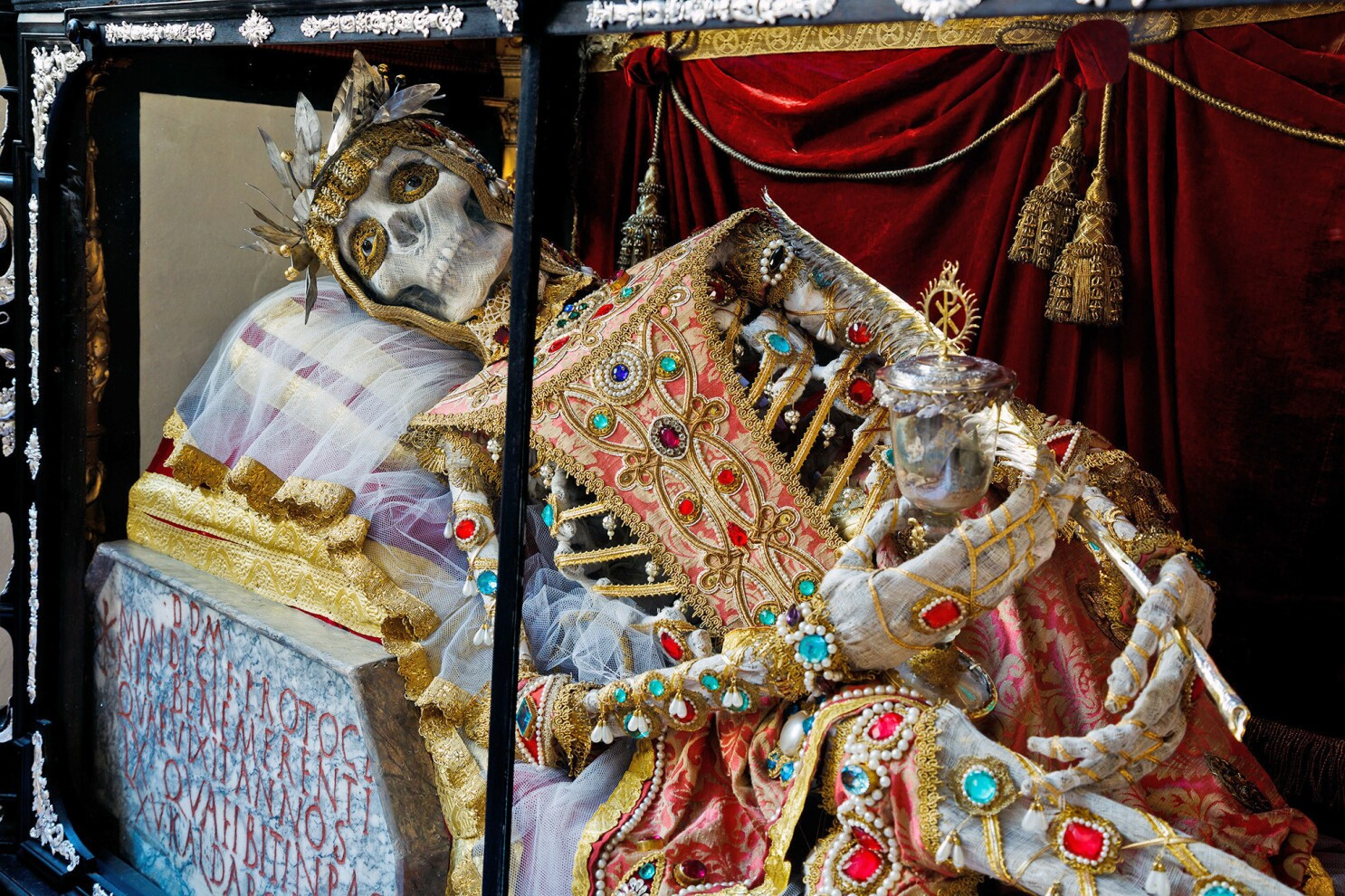
Beyond the glittering tomb and the City, are small shrines as expressions of devotion, sites of healing that operate as pastoral instruments ‘to propagate the religious messages of the church more emphatically,’ writes Peter Jan Margry in Shrines and Pilgrimage in the Modern World. Emphatic and prolific here, I seek them out. I orient myself by their placement and inhabit them as spaces where I shouldn’t be. Institutions require ‘not dismantling but rather mutiny in the form of strategic occupation,’ writes Legacy Russell in Glitch Feminism—glitch being from the German gletch: to slip. So that to occupy the space and shape of a shrine is a process of orientation and disorientation and an active refusal. A journey to nowhere, memorialising no one—dead on the prayer card and dead in the tomb.
I am building a shrine. I am building this text into a shrine. Not as a portal to God but as an open palm. Seeds, as grains of sand, piling in the palm of my hand. Like the triangulation of the mountain, the methodology is one of accumulation but unlike the triangulation of the mountain there is no apex—of one God, venerated in one body. We use “body” to give form to something abstract, Legacy Russell reminds us, while a shrine venerates that one body. So that to co-opt the form of a shrine is to disrupt the material of the Institution and the Institution of the body.
Despite Munditia’s glittering appeal, this shrine will have no centrepiece. Nan Shepherd writes ‘from the close by sprigs of heather to the most distant fold of the land, each detail stands erect in its own validity.’ Here now, a form emerges—on my desk and on the page. Found objects and texts connect on a level beyond reason. I waken them and waken the dust, and through gesture and arrangement, fold them in around themselves.
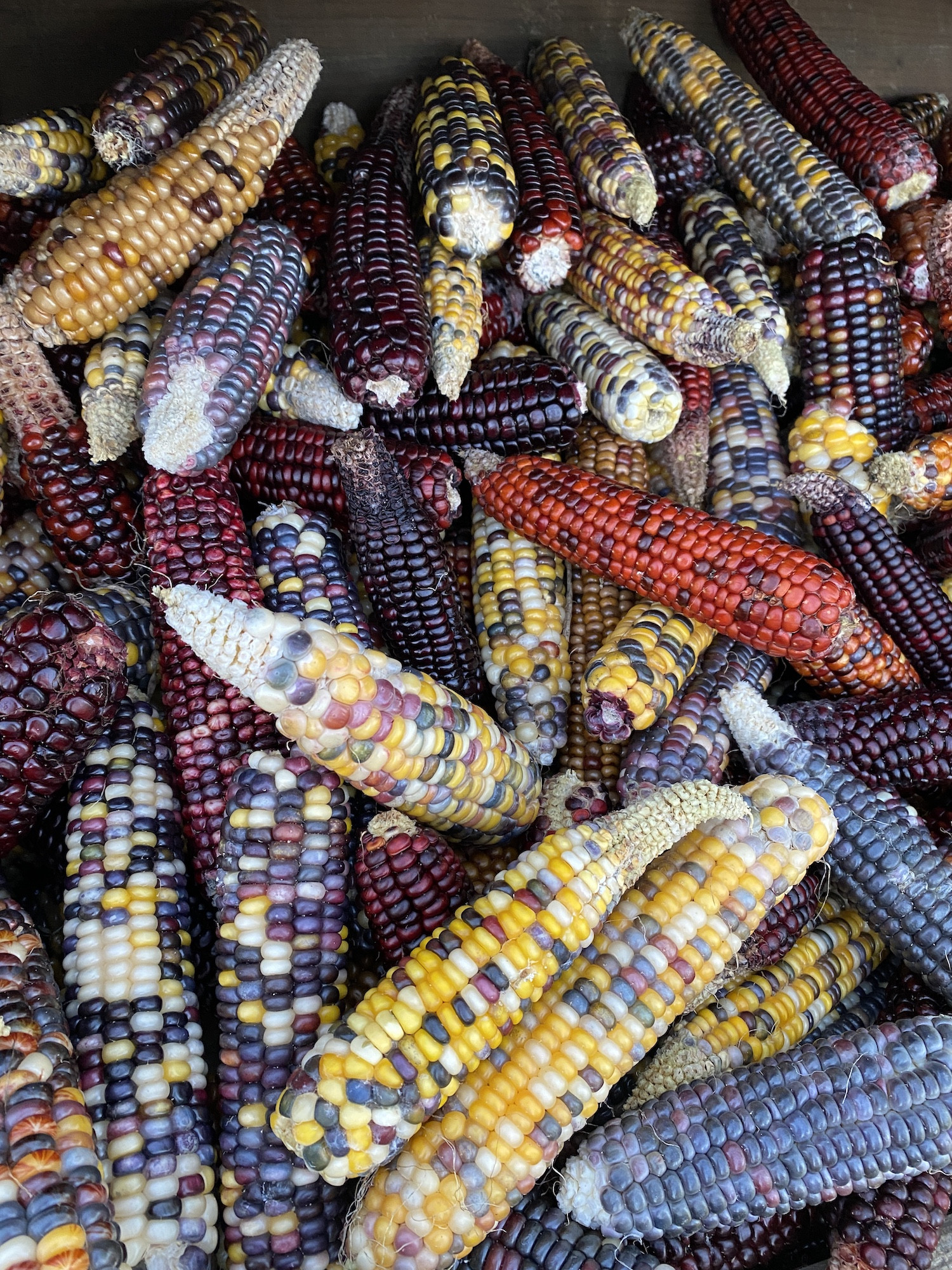
Writer and artist Pati Hill collected quotidian objects in a laundry hamper, photocopied them and discarded or re-circulated the original object: Versailles’s shrubbery, antique gloves, feathers, shells, her mother’s linen work dress. Like her, I am assembling meaning from other meanings. Suspended by the copier in a frame that is not a box, objects were relinquished of their substance—‘the depth of perception of the copier is shallow,’ writes Hill and I think of the lakeshore and the open palm. At the deep end of an avenue of beech trees nailed with depictions from the story of Christ is a shrine shrouded in the protective glare of perspex, waning under the elements and intercepted by a Hydrangea and the sun that filters through a gap in the undergrowth, revelatory. Jesus’ body is obliterated in slashes of red blood and below him on the cross Mary prays in her Mary Blue.
Like Mary, Hill reminds us, ’Xerox pictures do not fade and will last as long as the paper they are printed on.’
In the hills and dark pine forests and on the lakeshore with its easy navigation, there are other shrines and other Mary’s, with objects gleaned and laid at their feet. I co-opt their methodology—learn to glean from them. Agnes Varda tells us that ‘in past times, only women gleaned’ as a seasonal act of gathering harvest crops and later, salvaging the remnants or ‘waste’ from the fields that machines failed to collect.
Now women and men glean from bins and domestic refuse and house clearances—as survival and ethics. For gleaners, like fervent believers, objects become talismanic when they are given space. Down at the water’s edge, is a Marion shrine of a weathered but resolute Mary clutching an infant christ painted on board beneath a piecemeal roof, and the instep of the frame forms a ledge for offerings: a small vase of vibrant red, purple and yellow cut flowers, a varnished pebble, a collection of feathers, a rusting brass chain, a lantern, a red fabric heart and the melted stub of a candle. The residual wax and the vivid flowers animate pale Mary and express something of ‘the efforts the individual has to make to give meaning and direction to his or her personal existence.’
This is an intimacy that goes beyond monotheism. The whole terrain is marked with these assemblages, each their own, haunted by an author. On another shore of the same lake calcified pebbles form a thin circumference and cold water laps, like echoes, where warm hands once were. While nearby, a floral sweater is draped on a bench in the sun with its arms outstretched but no body inside.
You take what you put in.
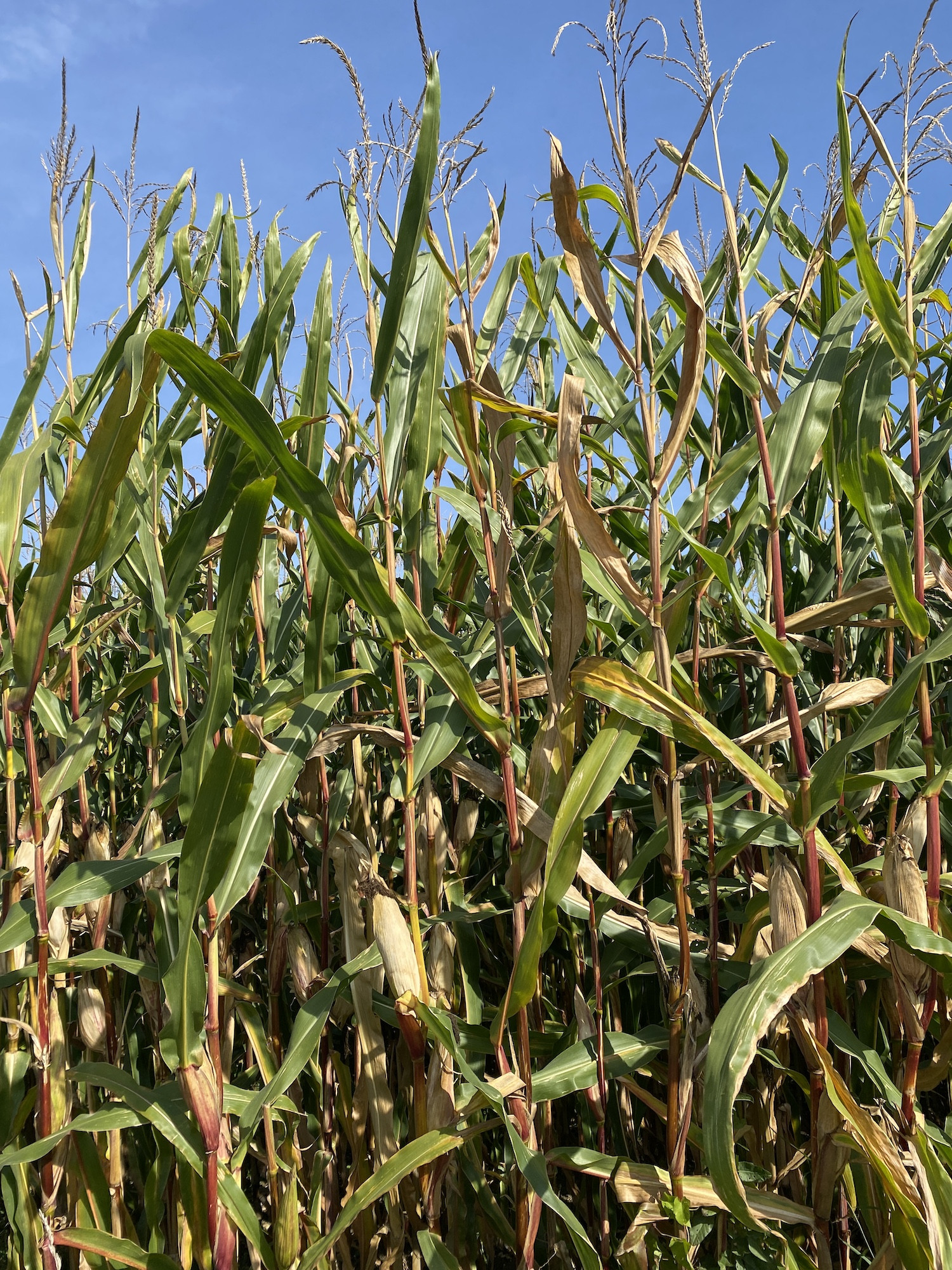
Someone leaves and someone enters. I disorientate and reorientate at the Tracht & Trödel, soothed by the familiarity of dust and cellularity of old skin and the quiet abandon of things. I am the incidental pilgrim—motioning towards objects on impulse: a cartoon-red vase moulded with bulbous roses; rusting orange candlesticks, carved golden cherubs and their stained cherry lips; tea-light holders in iridescent glass and patent plastic handbags. Raised gleaning, I place-make through this deluge and the spaces designated to its sentimental industry.
A shrine aids place-making and engenders pilgrimage; for Rome, as in to roam, is central to christian geography. ‘Because it requires going beyond the physical and mental boundaries of ordinary life, pilgrimage is a liminal activity,’ writes Margry; a devotional act measured not by distance but by approach—‘to enter it, to experience, to draw near, to touch, to make it their own, and if possible to hold onto it for their everyday lives.’
A well-warn trail leads pilgrims from lake, through deep ravine to a Benedictine monastery at the precipice of a glacial rock—now a foothill of the mountains. The height of Catholic pilgrimage in Bavaria, its fine Baroque chapel rapacious in gold and illuminated by a kind of goodness—be it that of God or the good fortune and timing of slanted rays and a low sun declares its economy—of cattle, beer brewing, rosaries and plasticised crucifixes imported from China and a hard liquor of distilled gentian flower. ‘Gentian,’ writes Nan Shepherd ‘and delphinium hues, with fire in them, lurk in the folds.’ Here, like there, Gentian grows and the monks harvest and turn it into a liquid clarity that burns. We buy small bottles, and small bags of frankincense, in fragments like jagged teeth—Angelus brown and Saloman red.
Nan Shepherd antagonises the expected verdancy of nature by brushing her landscape in arrangements of red—‘clumps of hot red like sunburst’ and rock 'broken into bright red fragments’ and blaeberry leaves ‘flaming crimson’. Here too everything is burning violent red and copper—the deep crimson of corn and the blazing sycamore leaves. Zeaxanthin is the Carotenoid pigment that gives blaeberry, saffron, paprika, ornamental corn and Rowan berries their hue. In Francis Rose’s compendium The Wild Flower Key (1997) she describes Rowan berries as globose like ‘tiny apples’—drawing connections in abundance—
Rowan, Sorubus aucuparia, smooth-barked tree, + 15m; lvl pinnate, compound, 10-20 cm long bearing strongly-toothed lots 3-6cm long, terminal left no longer than side ones, hairless above, whiteish-grey and downy below when young. 3-5mm long; fl-stalks woolley; styles 3-4, stamens many. Frs scarlet, globose, 6-9mm long, like tiny apples in structure, a fleshy outer case enclosing gristle-like carpel walls, each containing 1 or 2 seeds. Br Isles, Eur; f-lc especially to N, in dry was usually on acid soils, and on mt rocks. Fl 5-6; fr 9.
Hanging from the frame of Rose’s structured entries are these particulars—the minutiae, coordinates and digits like berries, like poetry—
Spindle, Euonymus europaeus, deciduous shrub or small tree, 2-6 m tall, hairless; twigs green, four-angled; lvs pop, oval-lancoelate, 3-13cm long only finely toothed, orange in autumn. Fls, in stalked forking cymes in If-axils, 3-10 together, each fl 8-10mm across, with 4 greenish-white petals, 4 short alt stamens; fr (Fb) four-lobed, 10-15 mm wide, bright coral-pink, opening by slits to expose the seeds, each with a bright orange sheath. Br Isles: GB N to Forth, vc to S, r to N; Ire f; Our f-lc, in wds scrubs, hbs on calc soils. Fl 5-6; fr 9-10.
Despite their delectable exterior, Spindle berries were used by Greek slaves to induce suicide; Rowan berries to relieve the gut. In variable concentrations of Zeaxanthin, the ornamental corn ranges, flickers—each kernel its own and a seed protected by a taught surface, like lacquer or flint—the flint of home. I find myself in relation to the lake—it becomes for me, a homing device. Named Ammer, a 13th-century form of Amper, the Celtic *ambra, of Indo-European *ombh as in "wet”, this body of water is not an amber water but an amber way—part of the Celtic amber trading route—an industry of precious resin—glass like honey, bark like water. Nan Shepherd and the Celts, found their way there, in one shade or another.
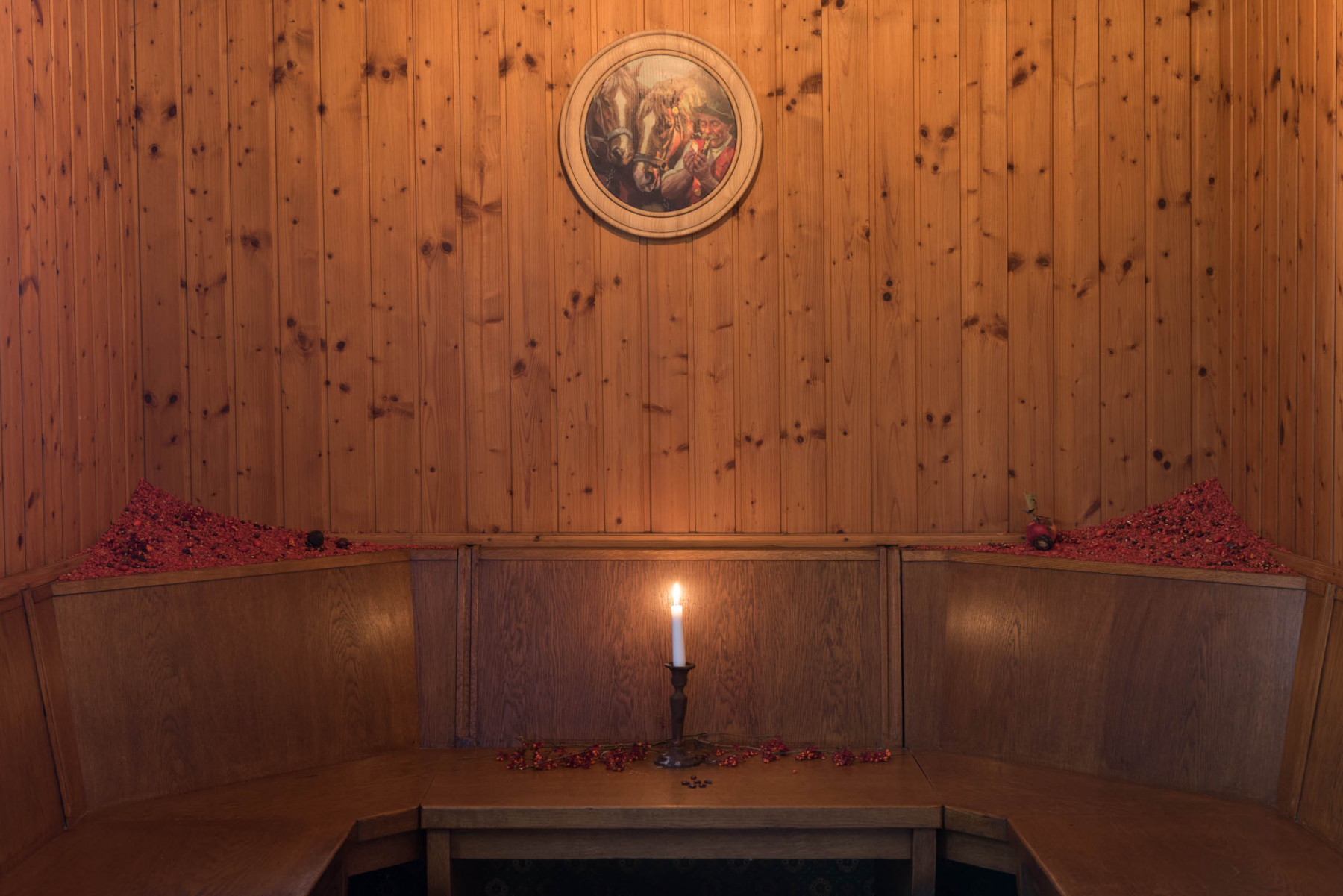
I am finding my way through the Zeaxanthin—the globose Rowan berries like tiny apples, and the toxic Spindle, the apple crop gathering worms and the ceramic teeth like kernels that I glaze in kirsch-rot. In the home depot, I consume the lustrous patination of screws and bolts, reams of chains with cut-it-yourself pliers, and the antenna melodies of never ever and black holes that break like tides against the metal roof some twenty meters high, and of twenty years ago. There I find large bags of tiny red stones to line aquariums with; I buy two bags and tip their shock of coralline-red into the corners of the kitchen and watch it pile up. Particles slip through the joins where the wooden seats meet the wooden panel walls, confessing itself a chapel. It piles in mountains, lit by a filament-bulb and the wooden timber. I arrange the paling corn kernels and the deflating berries, the turning apples, the blackened case of a walnut and the ceramic corn like stained teeth.
Outside, the sun starts its descent—‘precipice to precipice, glowing to rose and fading out,’ writes Nan Shepherd—and the field pales and the corn pales and the sky too pales; the tree pales and sheds leaves like snow; and beyond that, the lake—of amber pales; and the mountain and distant shoreline are lost to the atmosphere. I lose it when I enter the shock of cold water, let the shallows slide over me in an aquamarine of glacial water and chalk bed and understand why they thought it holy.
Margry asks, ‘whether the ‘secular,’ modern and non-confessional shrines and pilgrimages have a religious dimension.’ But what I think he’s really asking is whether we can imagine a religious dimension beyond monotheism. ‘Religion is about boundaries; spirituality is about lack of boundaries,’ a young woman in Glastonbury tells Marion Bowman, whose own academic interest occupies the margins of institutional religion.
The body gives form to something abstract but so too does religion. If we co-opt its material—the shrine, the path—for a metaphysics without boundaries then pilgrimage becomes simply an instinct, and the shrine an open palm.
I am writing through the shrine as methodology—of form, composition, perspective and scale. The low sun stains my shrine at its edges as if it seeps from the corners, illuminated by candlelight and the animate sprigs of Spindle flower, berries, teeth.
Folding text into images, Hill says, creates work ‘in which the two elements fuse to become something other than either—a third element hanging in the balance.’ I linger on the metaphysics of ‘something other than either’ as I lingered on Munditia’s quill. And then like a pilgrim, I return to the triangulation of the mountain and the open palm and the husks of corn like the body of Munditia—like the mountain—all of it hanging in the balance.
Bibliography
Shrines and Pilgrimage in the Modern World: New Itineraries into the Sacred, Edited by Peter Jan Margry
The Living Mountain by Nan Shepherd
Letters to Jill by Pati Hill
Glitch Feminism by Legacy Russell
The Flower Key by Francis Rose